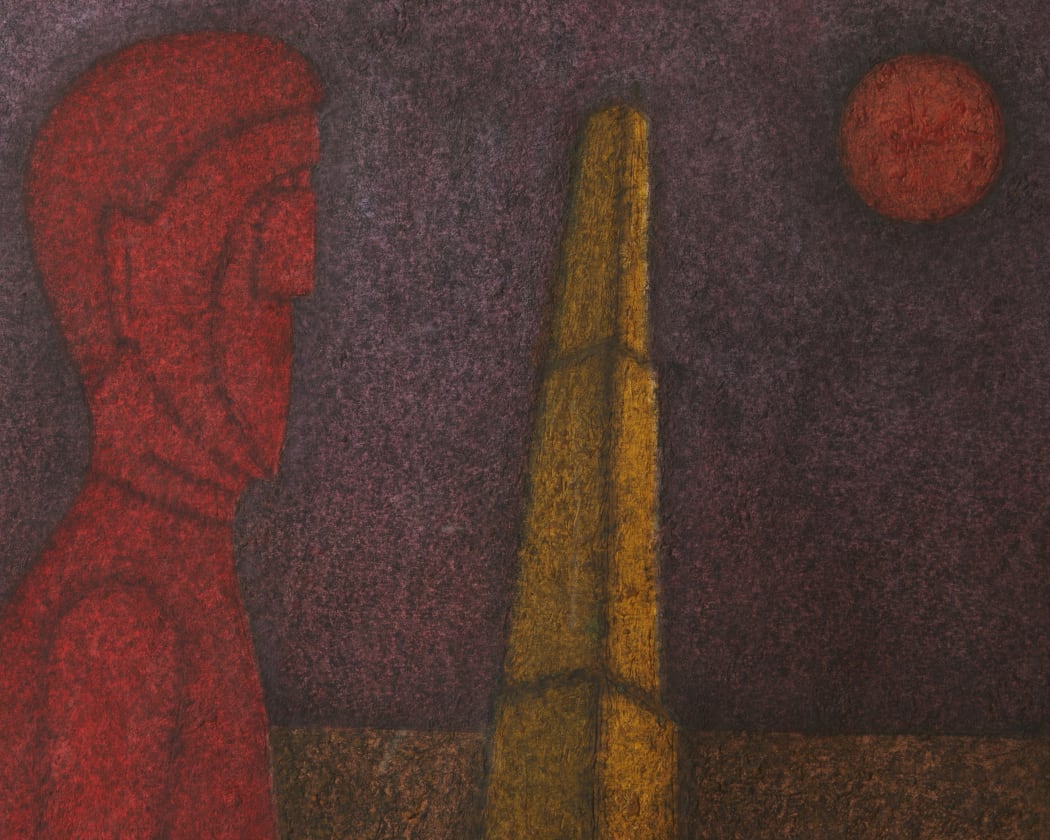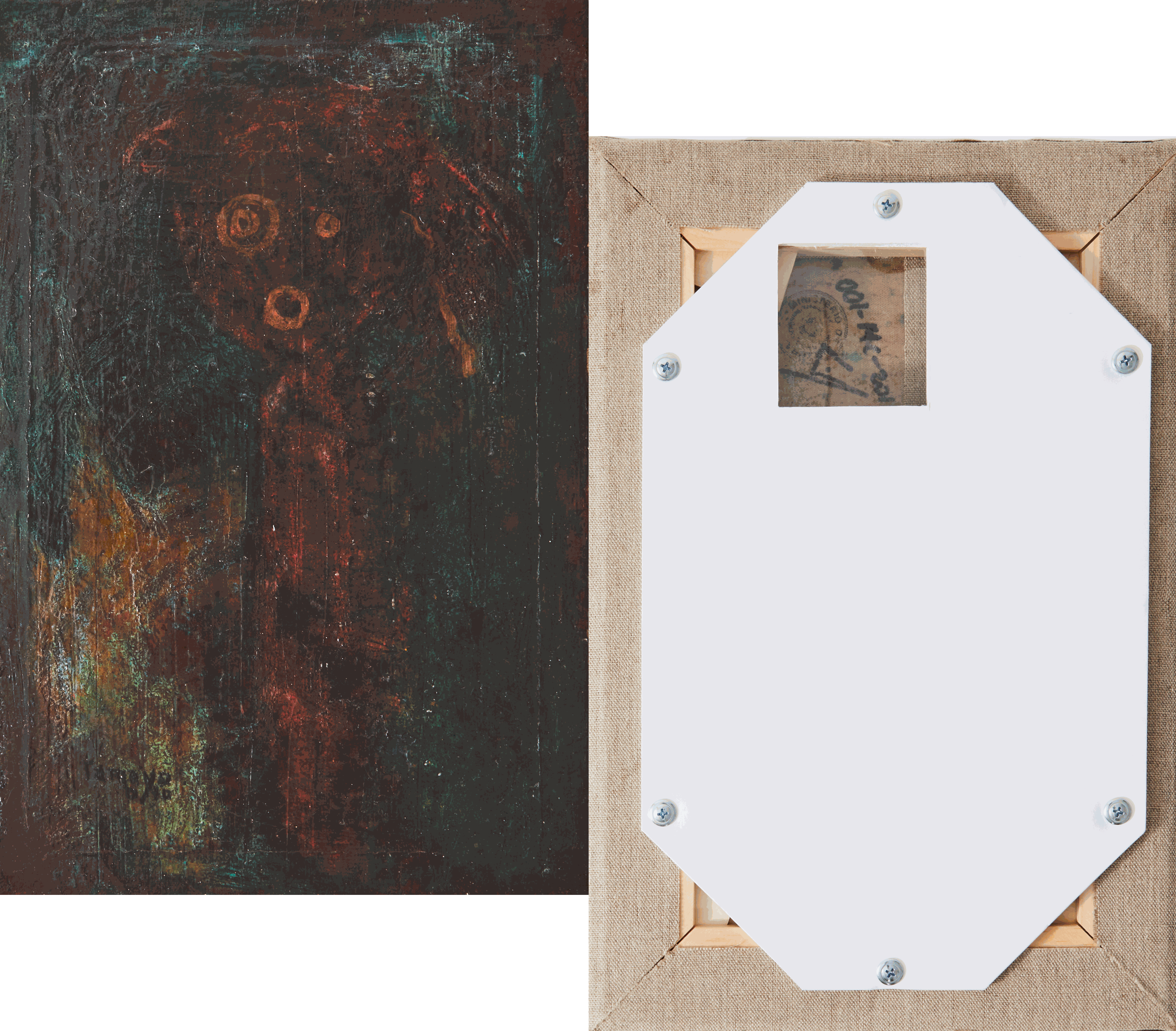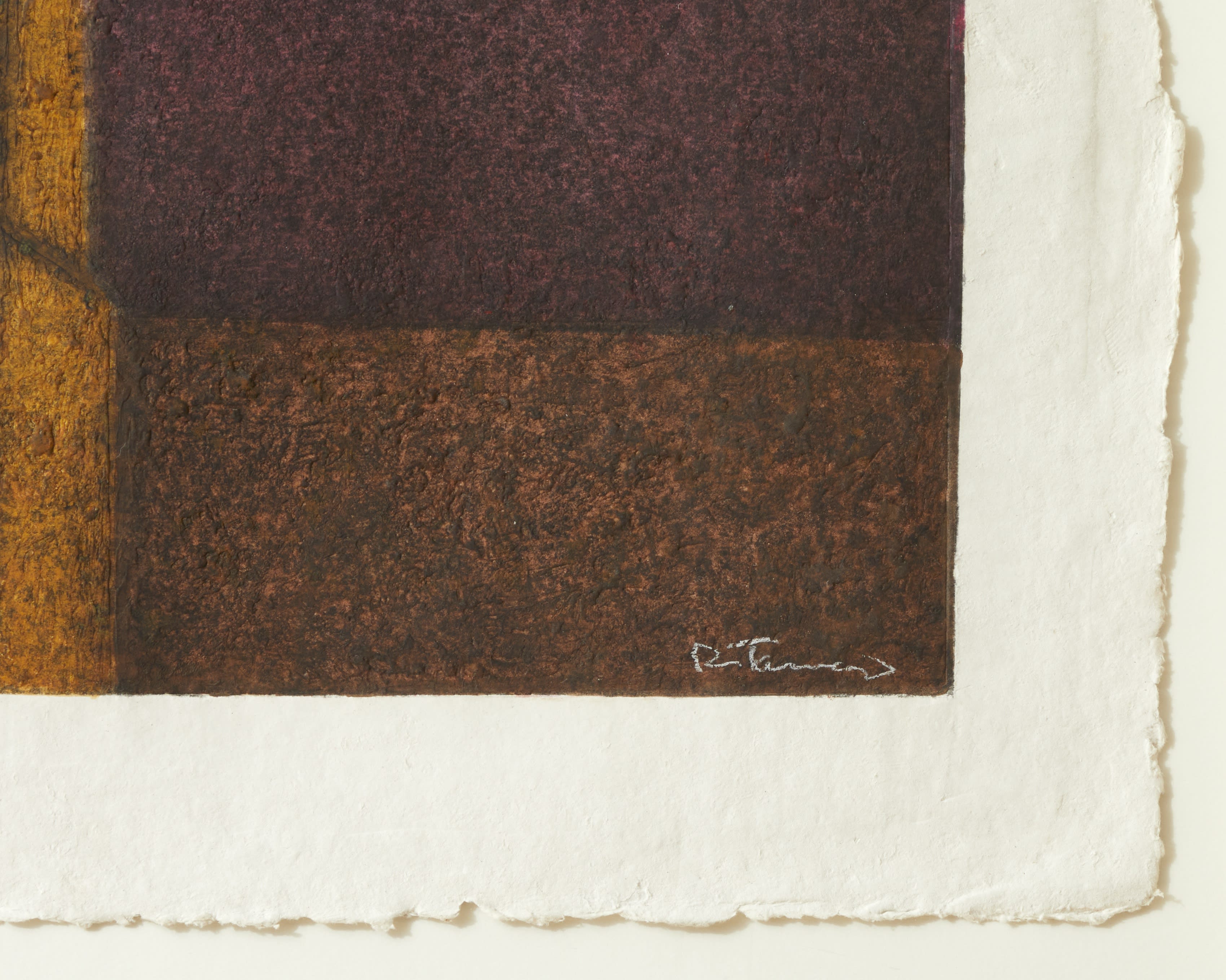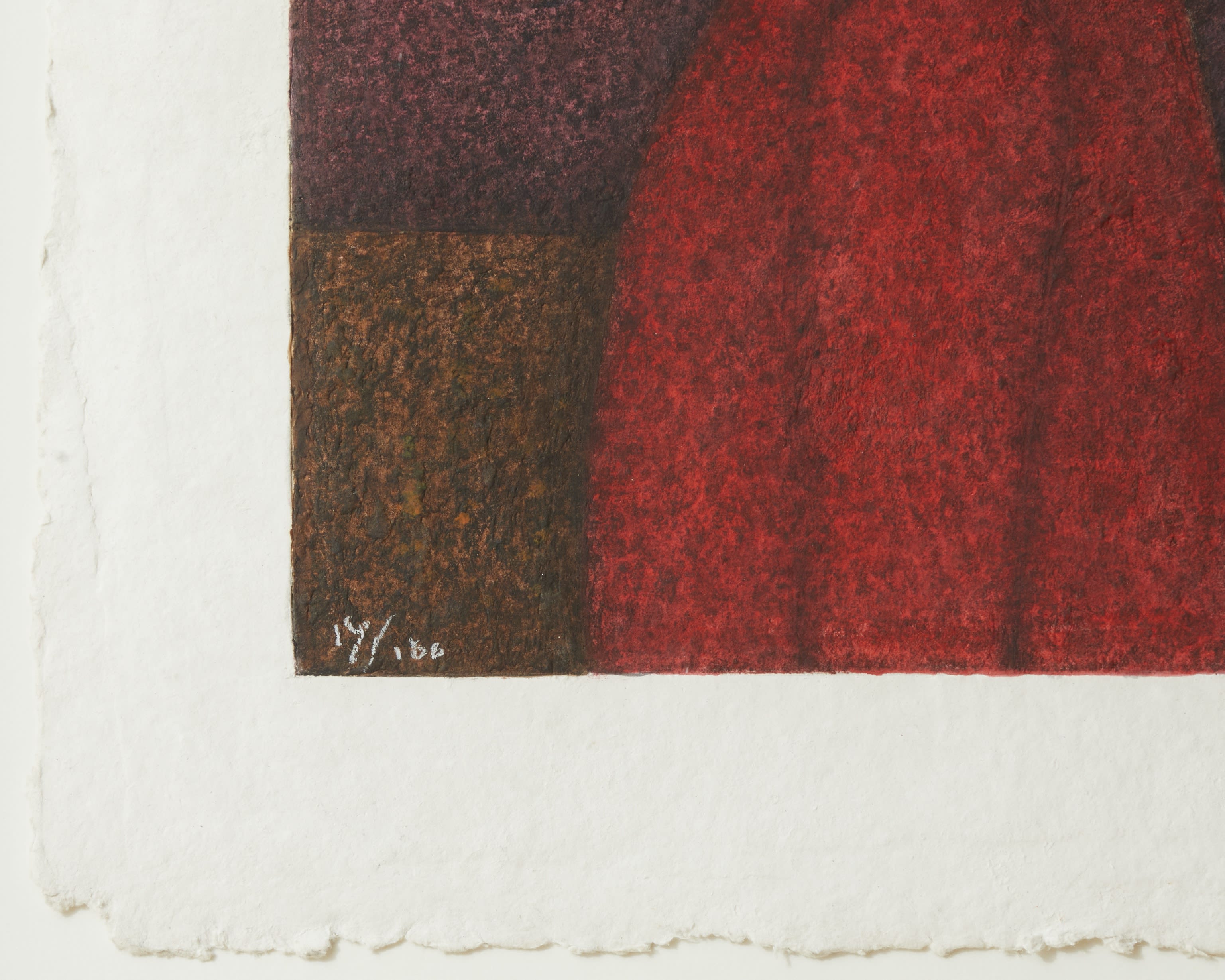
Recognized today as one of Mexico’s greatest artists, Rufino Tamayo (1899–1991) began his artistic career as an outcast. Tamayo's contemporaries, such as Diego Rivera, José Clemente Orozco, and David Alfaro Siqueiros ostracized Tamayo for his apolitical stance and preoccupation with aesthetics. But social isolation failed to deter Tamayo from his pursuit of developing a fundamental, universal, and distinctly Mexican visual aesthetic.

RUFINO TAMAYO | Untitled, 1940. Oil on canvas, 14 1/2 x 9 3/4 in (36.8 x 24.8 cm). Courtesy of the Siqueiros Family
For his commitment to his artistic philosophy, Tamayo earned the respect of his critics later in life, especially David Alfaro Siqueiros, to whom Tamayo gifted an early, previously undisplayed oil painting that has recently entered our collection as a historical artifact with the cooperation of the Siqueiros family. In this relic of Tamayo's artistic development, an abstracted figure grounded in a caliginous palette appear for the first time, introducing a visual motif that Tamayo would revisit throughout his later career in works such as Figura en Rojo.

RUFINO TAMAYO | Figura en Rojo, 1989. Mixograph print on handmade paper, 22 x 40 in (55.9 x 101.6 cm)
Printed in 1989, two years before Tamayo's death, Figura en Rojo distills a lifetime of study and practice into a handmade print that honors formal elements of Pre-Columbian art while addressing the Western European philosophical theme of individualism.
A print of beguiling simplicity, Figura en Rojo includes only a few subjects arranged in vertical thirds. An abstracted red figure composed of simple shapes dominates the left third of the composition and the foreground. A deep-ochre tower occupies the center third of the composition, while a red celestial body, ostensibly the sun or moon, occupies the upper-right third. A heavy black line set at a slight angle acts as the horizon, separating an intensely rich purple sky from the russet-colored land.

RUFINO TAMAYO | (Detail) Figura en Rojo, 1989. Mixograph print on handmade paper, 22 x 40 in (55.9 x 101.6 cm)
Figura en Rojo features a restrained palette of predominantly darker colors but manages to create a luminescent quality one might associate with tenebristic oil paintings of the Renaissance. The quality of light in Figura en Rojo stems from the Mixografia technique used during printing, which involves applying a layer of cotton pulp over an inked plate before pulling the print. During printing, the cotton pulp acts as a sponge, soaking up and locking in pigment to create deep, rich tones while lending a fibrous texture to the final print.

RUFINO TAMAYO | (Detail) Figura en Rojo, 1989. Mixograph print on handmade paper, 22 x 40 in (55.9 x 101.6 cm)
Developed with printer and engineer Luis Remba, Mixografia is one of Tamayo's many contributions to modern art. This novel printing technique, paired with the deliberate use of color, creates a sense of place common in Tamayo's works. In Figura en Rojo, the Mixografia technique evokes the coarse texture of the socio-political murals that lined the streets of Mexico City when Tamayo was a young man and saturates the work's red hues to evoke the character of Oaxaca's soil, imbuing the print with a sense of temporality and geography.

RUFINO TAMAYO | (Detail) Figura en Rojo, 1989. Mixograph print on handmade paper, 22 x 40 in (55.9 x 101.6 cm)
At a glance, the dark colors of Figura en Rojo suggest a night scene, but no stars occupy the sky, and the cast shadow on the tower suggests a more powerful light source than the moon, logically leading us to assume the advent of a full moon or a daytime scene. If one overlays Figura en Rojo with the cardinal directions while bearing in mind Tamayo's Pre-Columbian influences, where perspectives often appear flattened, then the celestial body appears to be in the far east; By an educated guess, it is the dawn of a new day. And perhaps, nearing the end of his life and printing one of his final works, Tamayo saw a new dawn he would have to face alone.

RUFINO TAMAYO | (Detail) Figura en Rojo, 1989. Mixograph print on handmade paper, 22 x 40 in (55.9 x 101.6 cm)
